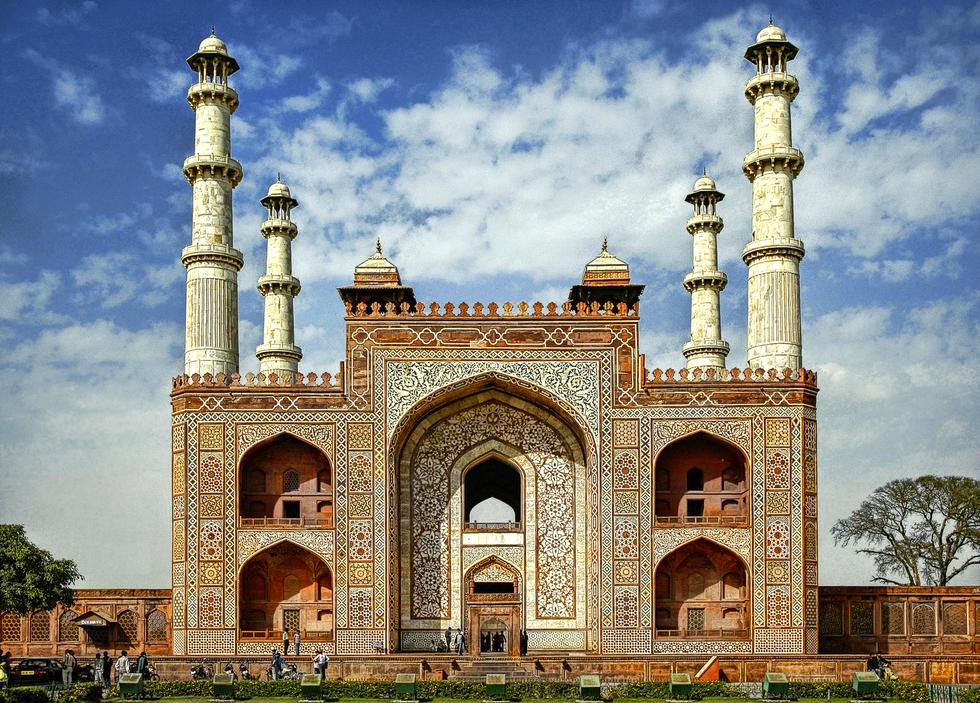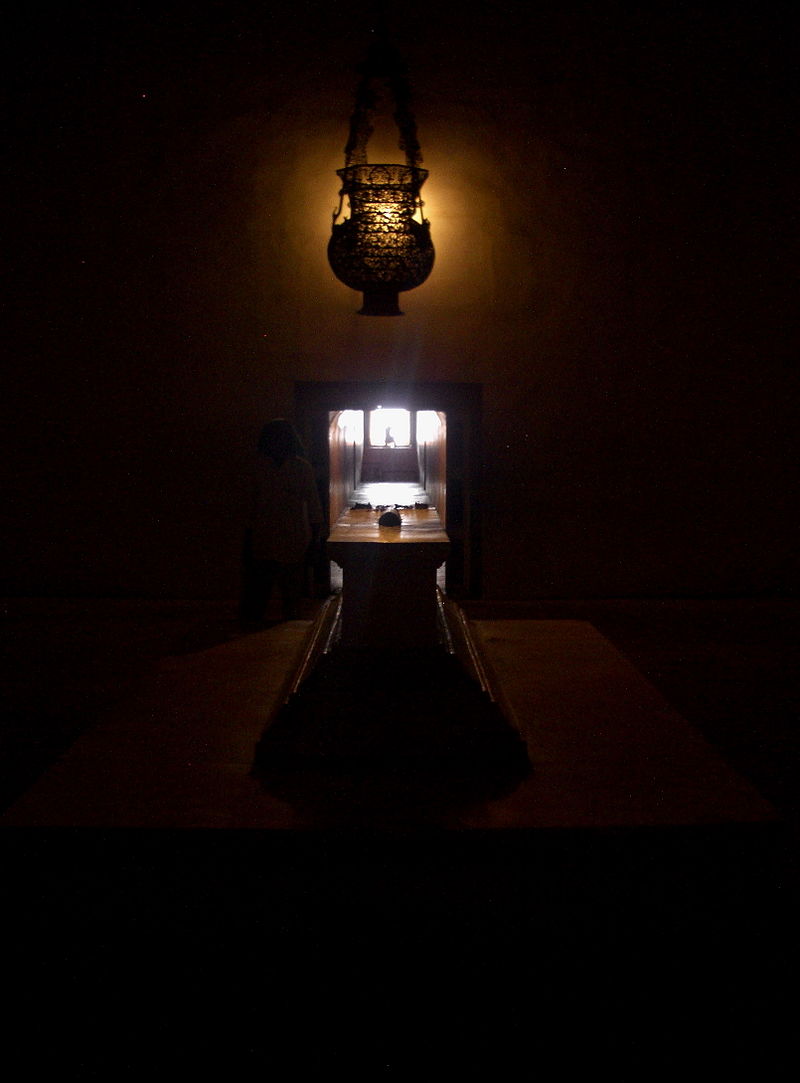
The last resting place of the Mughal Emperor Akbar the Great, is on the Delhi-Agra Highway, only 13 kilometres (8.1 miles) from the Agra Fort. Akbar's tomb reflects the completeness of his personality. The vast, beautifully carved, red-ochre sandstone tomb with deers, rabbits and langurs is set amidst a lush garden. Akbar himself planned his own tomb and selected a suitable site for it. To construct a tomb in one's lifetime was a Turkic custom which the Mughals followed religiously. Akbar's son Jahāngīr completed construction of this pyramidal tomb in 1613. The 99 names of Allah have been inscribed on the tomb.
The third Mughal Emperor, Akbar (1555–1605), commenced the construction of his own tomb in around 1600 as, according to Tartary tradition, one has to commence the construction of one's tomb during one's lifetime. Akbar planned the tomb and selected a suitable site for it. After his death, Akbar's son Jahangir completed the construction in 1605–1613
Akbar was one of the greatest emperors in the history of India. However, during the reign of His great-grandson, Aurangzeb, the rebellious Jats under the leadership of Raja Ram Jat, ransacked the intricate tomb, plundered and looted all the beautiful gold, jewels, silver and carpets, whilst destroying other things. He even, in order to avenge his father Gokula's death, plundered Akbar's tomb, looted it and dragged Akbar's bones and burned them in retaliation. He was later sentenced to death by Aurangzeb.
The Tomb suffered a lot, until extensive repair was carried out by the British under Lord Curzon. The neighbouring Taj Mahal was also looted, and two of Agra's gates were taken away.
The south gate is the largest, with four white marble chhatri-topped minarets which are similar to (and pre-date) those of the Taj Mahal, and is the normal point of entry to the tomb. The tomb itself is surrounded by a walled enclosure 105 m square. The tomb building is a four-tiered pyramid, surmounted by a marble pavilion containing the false tomb. The true tomb, as in other mausoleums, is in the basement.The buildings are constructed mainly from a deep red sandstone, enriched with features in white marble. Decorated inlaid panels of these materials and a black slate adorn the tomb and the main gatehouse. Panel designs are geometric, floral and calligraphic, and prefigure the more complex and subtle designs later incorporated in Itmad-ud-Daulah's Tomb.
Set within walled gardens, the tomb is entered via a massive high gate. It’s a beautiful structure topped with four towers and decorated with bold, swirling geometric and floral designs. The colour scheme of contrasting brick-red and white seems to fit the dusty landscape of northern India.
Within the compound, a long stone walkway divides the area into two large rectangles of lawn, dotted with curly-horned deer which graze here as they would have in Akbar’s day. Presumably they look both decorative and keep the grass down.
The mausoleum itself, planned in Akbar’s lifetime and completed in 1612, is a vast square building with arches, canopies, decorative panels and multiple storeys. Within its centre is the emperor’s tomb, a simple inscribed oblong of marble covering his remains. Nearby are similar, smaller tombs for his daughters. It’s within one of these that a local woman demonstrates the excellent echo effect to visitors in hope of a little baksheesh.
Outside in a cool breeze on a sunny day, it’s pleasant to sit on the low stone retaining wall above the gardens, and reflect on history and the passing of greatness.
